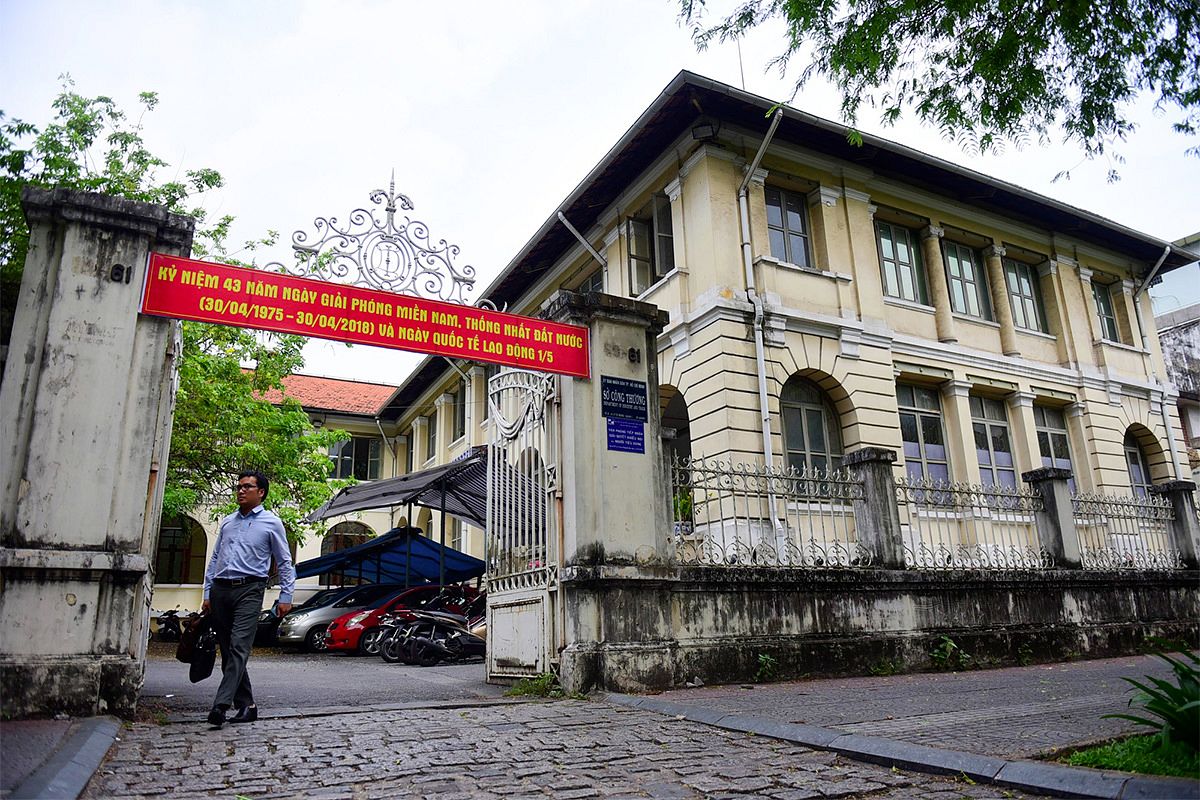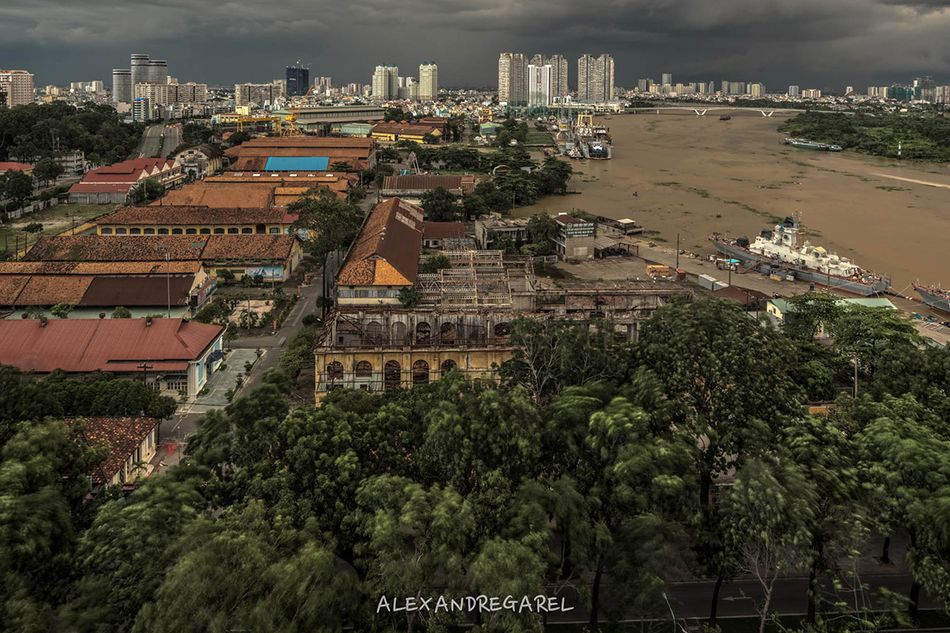The project to build a new City Administration Centre behind the Ho Chi Minh City People’s Committee involves the destruction of several heritage buildings. The art deco office and apartment block at 213 Dong Khoi was demolished in mid 2014 to make way for a “faux colonial” extension to the 1909 City Hall, and now, after several changes of plan, the old French government building at 59-61 Ly Tu Trong has also been condemned to destruction.
Many of us pass it every day and scarcely give it a second look. Yet the building which houses the HCMC Department of Information was once a focus of French colonial power second only to the Governor’s palace.
The earliest French government building on this site was the Direction de l’Intérieur (Department of the Interior), constructed by the Cochinchina authorities in the early 1860s. Although no photographs of the building have survived, it was depicted clearly in the remarkable 1881 engraving, Saïgon d’après nature.
According to L de Coincy’s book Quelques mots sur la Cochinchine en 1866 (A few words about the colony in 1866), the department was “responsible for the entire civil, judicial and financial administration of the colony” and its representatives throughout Cochinchina were inspectors of Indigenous Affairs. In 1888, the functions of the Direction de l’Intérieur were subsumed by the Secrétariat général du gouvernement de la Cochinchine, and soon after this a larger building – the current one – was constructed at 59-61 rue de la Grandière. By the early 20th century, this was often known by the alternative names of Bureaux du gouvernment or Bureaux des Services civiles.

The 1888 compound in the early 20th century. Photo courtesy of Tim Doling.
Following the Second World War, the French briefly set up a Ministère de l’Intérieur (Interior Ministry) in the compound for the short-lived State of Vietnam.
However, after 1955 a new Bộ Nội vụ (Interior Ministry) was opened in the former Direction de la Police et de la Sûreté compound at 164 Tu Do (now Dong Khoi) and 59-61 Gia Long (as it then became known) was transformed into the South Vietnamese Ministry of the Economy (Bộ Kinh tế).
In 1958, the compound made a fleeting appearance in Joseph L Mankiewicz’s film version of Graham Greene’s novel The Quiet American.
The 130-year-old compound currently serves as the headquarters of the Department of Information and Communications (Sở Thông tin và Truyền thông) and the Department of Trade and Industry (Sở Công thương).

The building serving as the South Vietnamese Ministry of the Economy (Bộ Kinh tế) in the 1960s. Photo courtesy of Tim Doling.
In December 2014, the HCMC People’s Committee announced that it had launched a competition to select a design for the new building, “which will achieve the highest requirements, the optimal location in the most solemn part of the city, with architectural harmony between works to be preserved and embellished and those to be built new, in harmony with the architecture of the surrounding area.” Eleven designs were eventually shortlisted and placed on public view in the Ho Chi Minh City Exhibition Centre, with the intention of canvassing public opinion on which one was best.
In the wake of this exhibition, no first prize was awarded, but by October 2015 it was implied that the judges’ “second choice” design by the Nikken Sekkei company would be selected for implementation. This scheme involved preserving the old French government building at 59-61 Ly Tu Trong by cutting it into three pieces and physically moving it 100 meters southwest of its present location, so that it was in line with the central axis of the City Hall.
Nothing was then heard of the project until April 2018, when it was announced that an entirely different scheme by American design and architecture firm Arthur Gensler Jr. & Associates, Inc would be placed on public view for consultation. Unlike the Nikken Sekkei scheme, the Gensler design dispensed with the 130-year-old Secrétariat général building altogether.

The new design by Gensler. Photo via Vietnam Finance.
This will be the third major Saigon heritage building destroyed to make way for a Gensler project. It follows the destruction in 2010 of the old Contrôle financier building (12 Le Duan) to make way for the stalled Lavenue Crowne project and the demolition in 2015 of the old Grands Magasins Charner (Tax Trade Centre) to make way for a new 46-storey commercial complex and metro station.
Have a look at the 130-year-old building at 59-61 Ly Tu Trong today:




Photos via Soha.
Tim Doling is the author of the walking tour guidebooks Exploring Ho Chi Minh City (Nhà Xuất Bản Thế Giới, Hà Nội, 2014) and Exploring Hue (Nhà Xuất Bản Thế Giới, Hà Nội, 2018).















